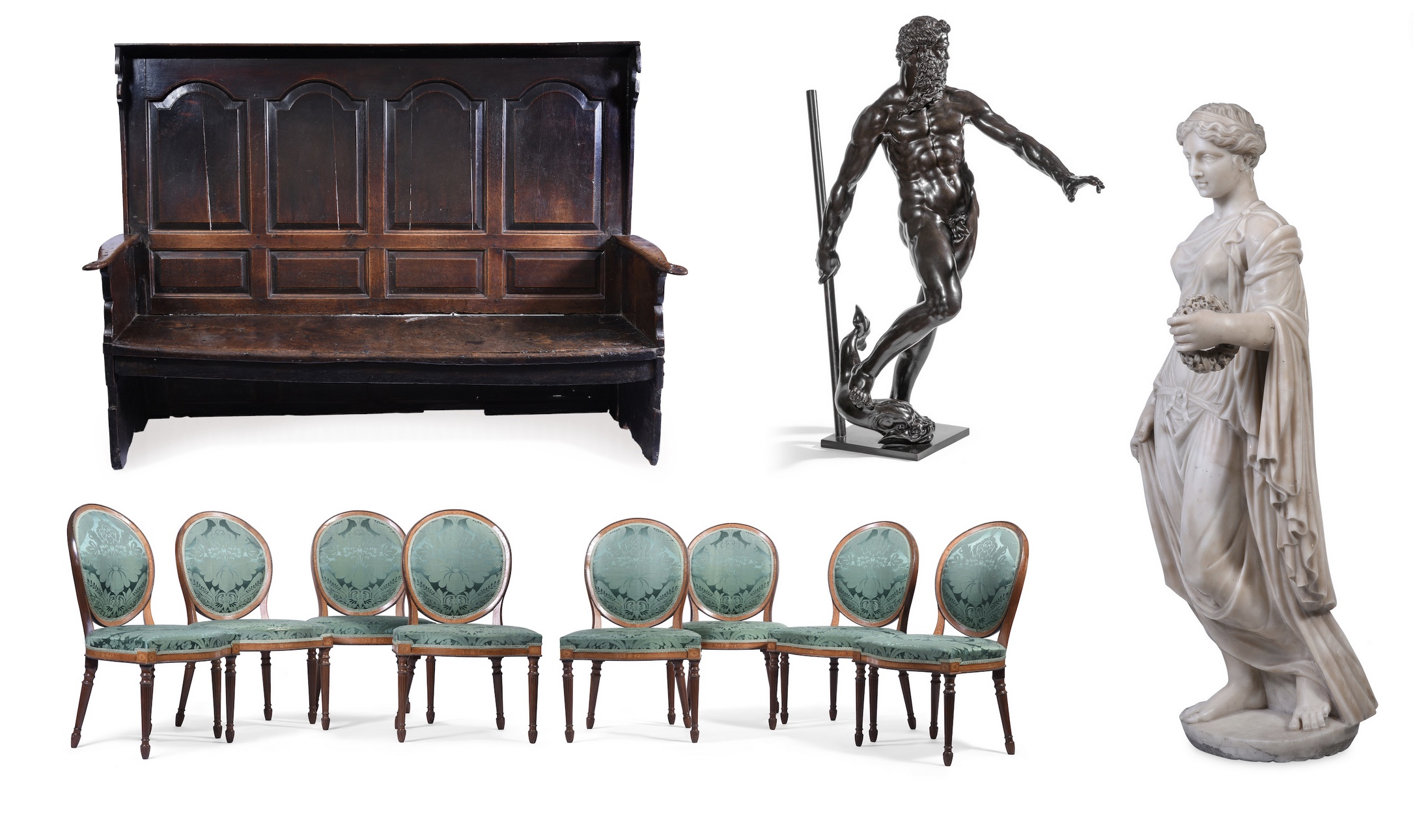#Items #Tomasso #collection #Dreweatts #Antique #Collecting
A curated auction of antiquities, 17th-19th century works of art, European art and furniture from the Tomasso collection at Bardon Hall, near Leeds in Yorkshire will go under the hammer on November 14 and 15 at Dreweatts auction house.
Tomasso was founded by brothers Dino and Raffaello Tomasso, who manage the collection housed at Bardon Hall, alongside the next generation of the Tomasso family. Their collection comprises European sculpture, Old Master paintings and ancient art, which is often on loan to museums around the globe, or among works on display in special exhibitions. For this they are recognised internationally for their expertise.

Commenting on the sale, Joe Robinson, Dreweatts Head of House Sales & Private Collections, said: “Dreweatts are delighted to have been invited by the internationally renowned Tomasso brothers, Dino and Raffaelo, to hold the sale of this curated group of works. The auction will offer an exciting opportunity to attain works from the collection of two of the most respected dealers of European sculpture, Old Master paintings and ancient art.”
Among the highlights of the sale is a set of eight George III mahogany, sycamore and marquetry chairs, dating from 1780, in the manner of John Linnell (1729-1796). Speaking about them the Tomasso brothers said: “Our love of the English Neoclassical, which is epitomised in this elegant set of eight chairs, germinates from growing up only a few miles from Robert Adam and Thomas Chippendale’s masterpiece, Harewood House. Even as children we absorbed the atmosphere of the Great Age of Enlightenment through architecture and decorative arts, of which these chairs are a primary example. We were fortunate enough to spend our childhood in a house whose architecture was designed by John Carr, who worked alongside Robert Adam at Harewood.” The set carries an estimate of £3,000-£5,000.
Next is an 18th-century oak and burr settle which the Tomasso brothers say: “retains all of its originality in terms of patina and condition.” They continue: “During our formative years, as young dealers, one thing we quickly came to understand was that an untouched piece of furniture, which this utterly charming settle sums up, would always garner a premium in a collector’s world.” It carries an estimate of £1,500-£2,500.
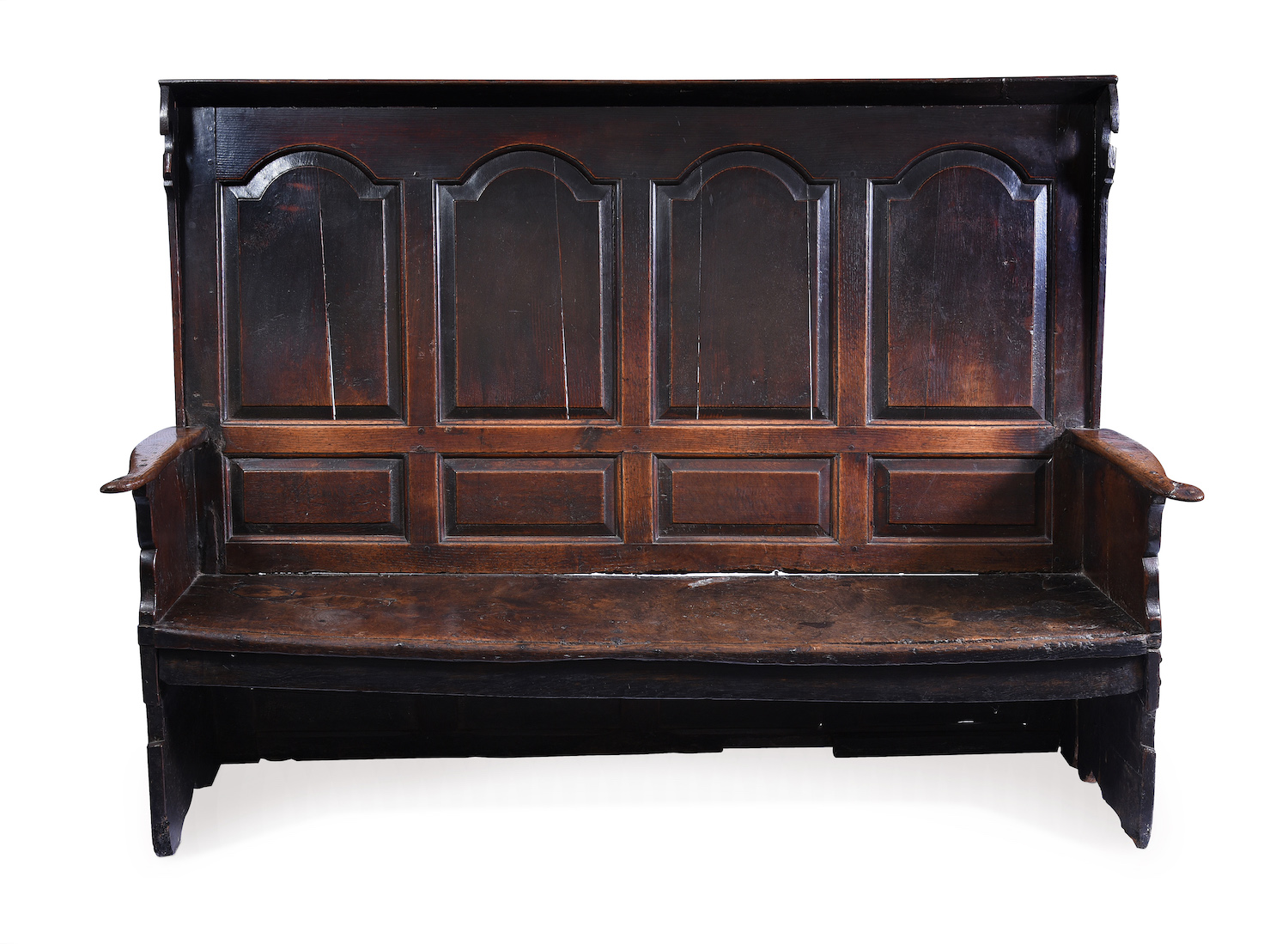
Continuing on the theme of British decorative arts is a fine and rare large Charles II yew and beadwork mirror, which the brothers believe dates from 1662 to commemorate the marriage of Charles II to Queen Catherine of Braganza. Charles’ parents can be seen flanking the mirror in honour of the Stuart dynasty. Highly decorative, it is estimated to fetch £30,000-£50,000.
The brothers describe a Roman white marble head of a young man in the sale as: “a fine example of portraiture from the Antonine period, which typifies the Baroque attitude to hair styles at the time. It is likely to come from the reign of the great philosopher, Emperor Marcus Aurelius.” Dating from 2nd century A.D. it carries an estimate of £8,000-£12,000.
Provenance is very important to both brothers, commenting they say: “Over the years whilst buying and selling on the international market, we have both come to realise just how important provenance can be and provenance doesn’t come much better than Harewood House. During its remodelling by Sir Charles Barry in the mid 1840s, he strived to be as sympathetic as possible with the previous architects, Adam and Carr. He clearly achieved this with a set of corbels in the sale which, as championed by the two previous 18th century designers, show a deep understanding of the ancient ideals for architecture.” The set of six painted and giltwood corbels (decorative supports) by Sir Charles Barry (1795-1860), for Harewood House date from 1845 and carry an estimate of £4,000-£6,000.
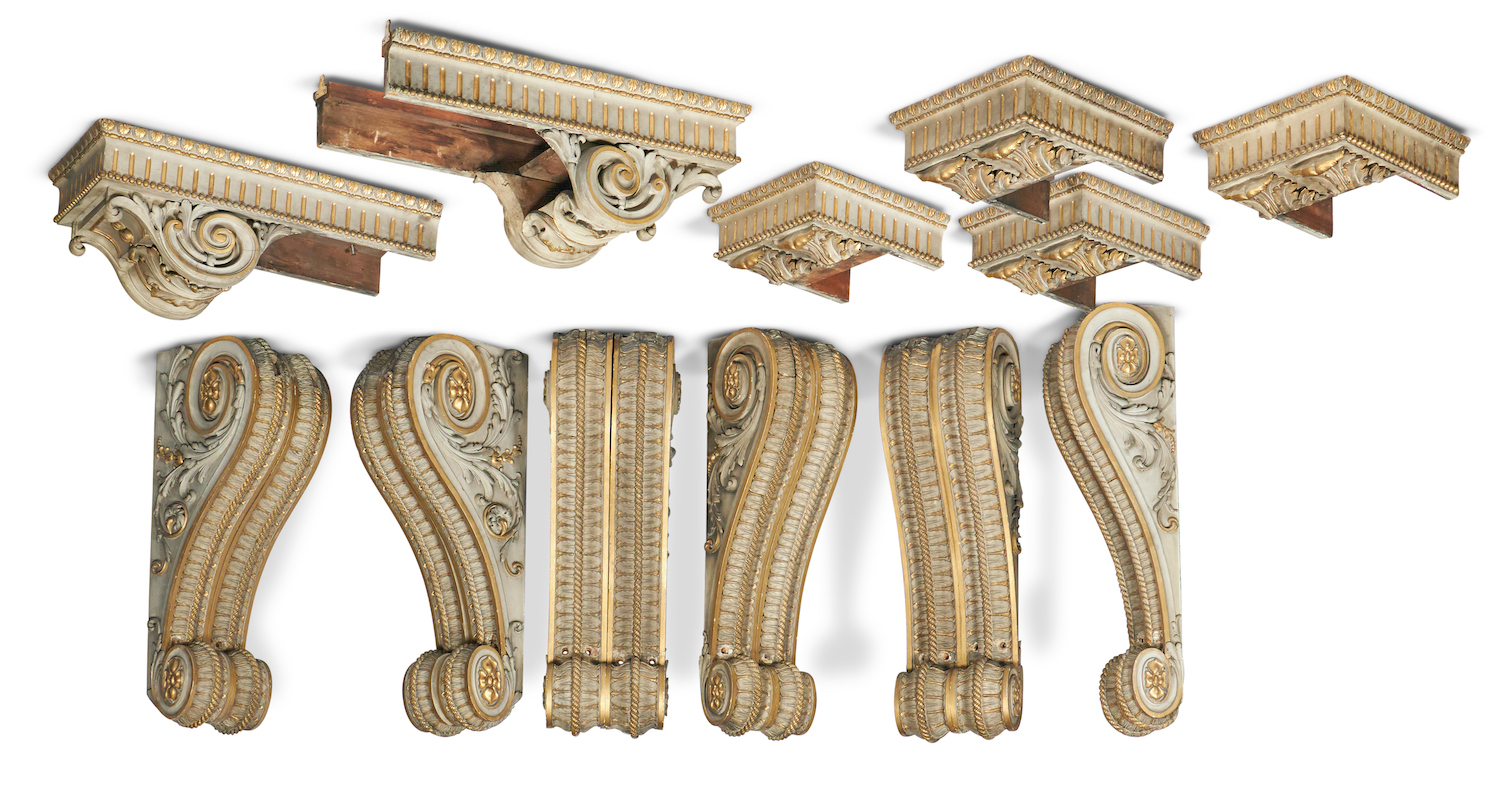
Also in the sale is a beautiful Italian 18th-century marble figure of the Flora Farnese after the antique (the original Flora Farnese is one of the ancient marbles of the celebrated Farnese collection that originally stood in the courtyard of the Palazzo Farnese, Rome and is now in the Museo Archeologico Nazionale, Naples). Commenting on the figure in the sale, the brothers said: “Dating from the 18th century, which is typified by the quality of the marble and carving, (and also the fact that she is holding a wreath, which was later replaced by a nosegay), our Flora Farnese is a fine example of sculpture purchased by the British and Irish Grand Tourists who travelled en masse to Italy throughout the 18th century.
“‘The Grand Tour’ was considered almost obligatory for the milords of the epoch and both of us have, over the past decades, navigated our own Grand Tours of Italy, which have enthused us and reinforced our love and appreciation for the ancient world. We are fortunate to be able to acquire beautiful objects from this period and hope that our enthusiasm for this period is reflected in our collection.” It carries an estimate of £8,000-£12,000.
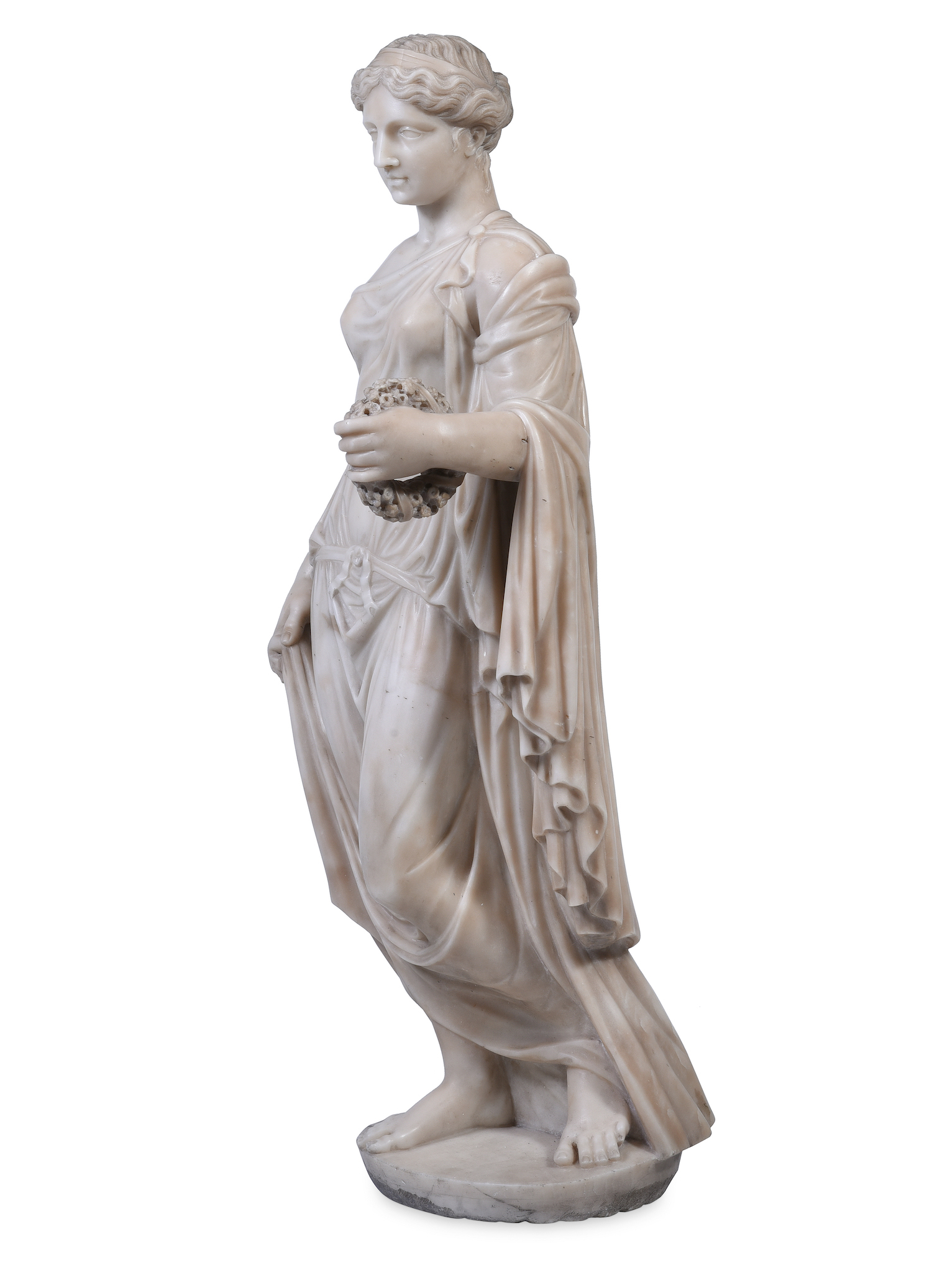
Continuing on the ancient world theme is a group of central European bronze hair rings and spiral pendants from the late Bronze Age. Commenting on them, the brothers said: “Since the rediscovery of the ancient world during the Renaissance period, there has always been a want to recreate the incredible and natural colours of the objects and architecture coming to the fore, from the previous millennia. Upon closer inspection of these bronze adornments, one cannot only see the exceptional quality of casting, but the natural colour that radiates from the surface of the hair rings and pendants, is truly beautiful. This is further enhanced by the fact that all seven objects retain their original patina…a joy to behold in the flesh.” The group carries an estimate of £2,500-£3,500.
A 19th-century bronze figure of Neptune in the sale is after a model by Giambologna (1529-1608). Speaking about the figure, the brothers said: “Giambologna, undoubtedly the greatest sculptor in the generation after the enigmatic Michelangelo, created his greatest work of the mid 1560s, for the city of Bologna, in the form of the Neptune fountain. Our bronze is an extremely fine cast of the main protagonist from the fountain and is highly likely to have been cast in Florence during the 19th century. Both of us have always admired the fine quality of bronzes from all periods which are reinterpretations of the great master’s models.” The figure carries an estimate of £2,000-£3,000.
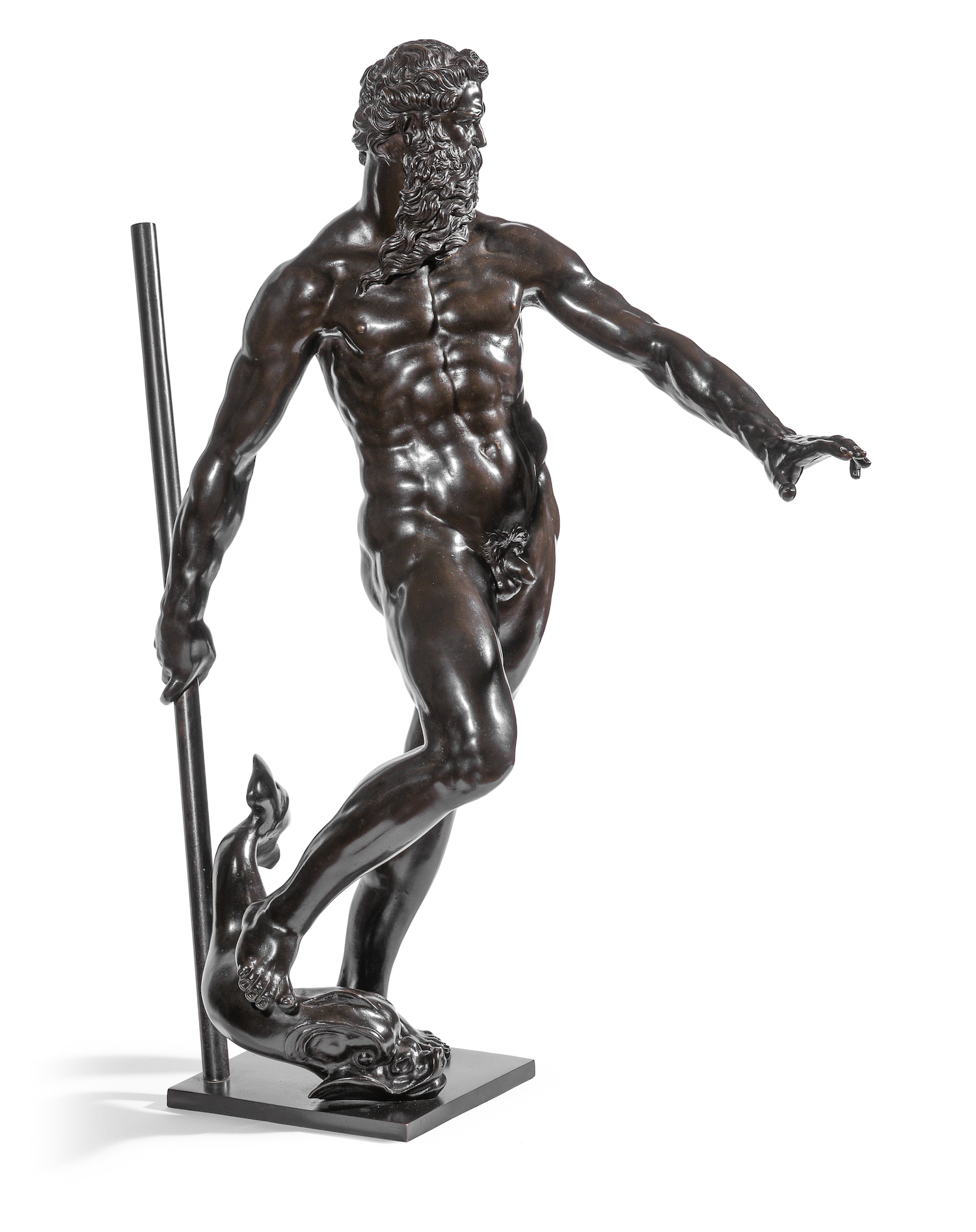
A ‘French School’ portrait by an unknown artist of a young mineralogist (someone who studies minerals present in natural resources like sediments and rocks), holding a quartz, is an unusual lot in the sale. Commenting on acquiring it, Raffaelo Tomasso said: “Dino and I were both entranced by the rare subject of this portrait of a young and clearly enthusiastic mineralogist. Dating from circa 1820 and presented in its original French frame, the portrait is likely to have been painted in Paris, by a yet unknown artist. However, this does not detract from the fact that the painting is an extremely interesting example of what we term a ‘period portrait’, of a student of one of the natural sciences.” The portrait is estimated to fetch £2,000-£3,000.
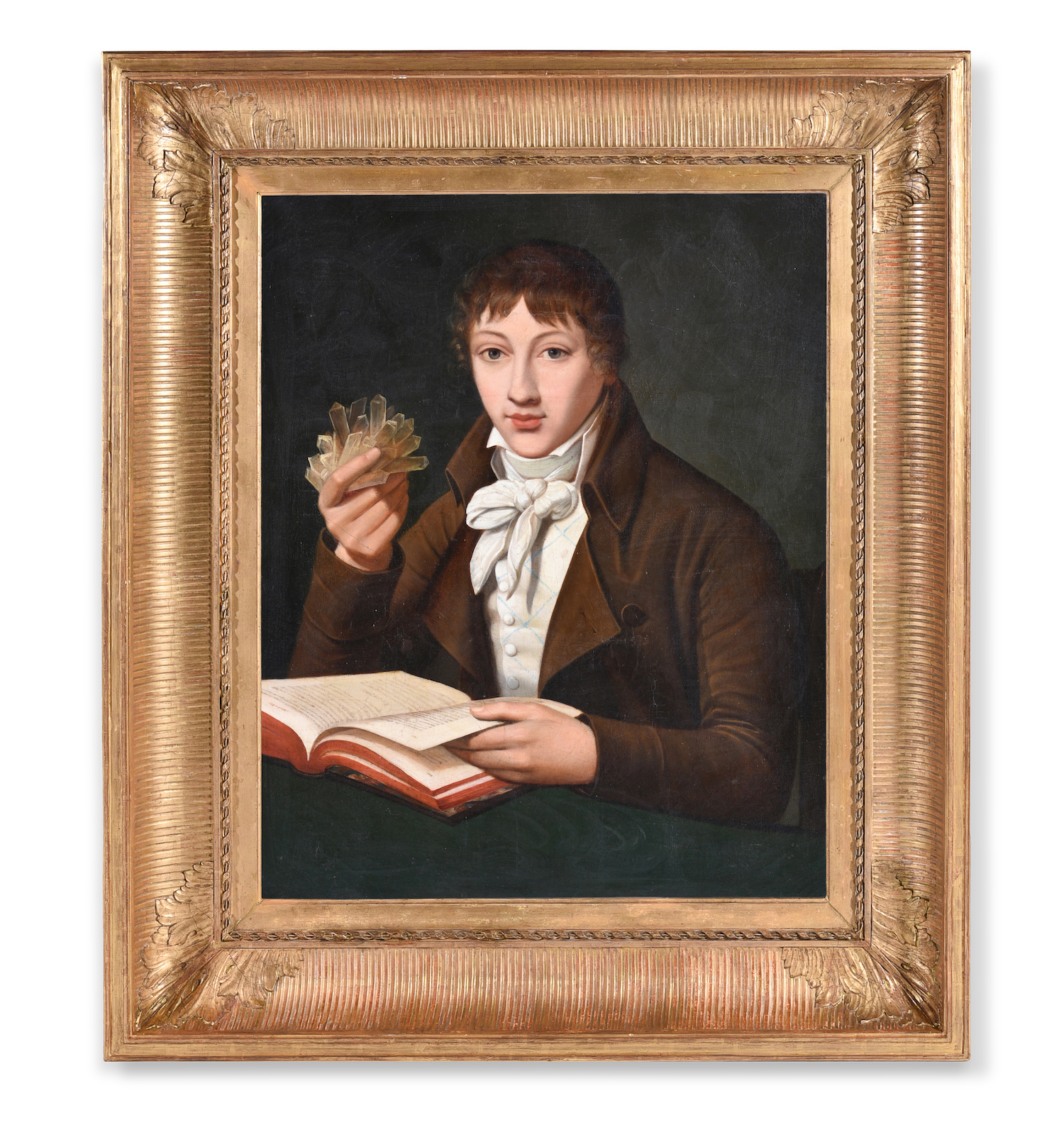
“A pair of fantastical 18th-century oil landscapes portraying objects from the ancient world in varying materials, such as terracotta, marble, bronze and silver, typify the wondrous reaction in Europe, to the rediscovery in the early 18th century of great ancient sites such as Pompei and Herculaneum. This pair of paintings would have adorned either an Italian palazzo, or one of the great British Neoclassical interiors, which were for obvious reasons, very much influenced by the excavations at the great classical sites in Italy and Greece”, said Dino Tomasso. “Raffaelo and I have always had the pleasure of trying to see if we could recognise any of the objects in this type of painting, which has led to many amusing moments and anecdotes.” The pair has an estimate of £4,000-£6,000.

